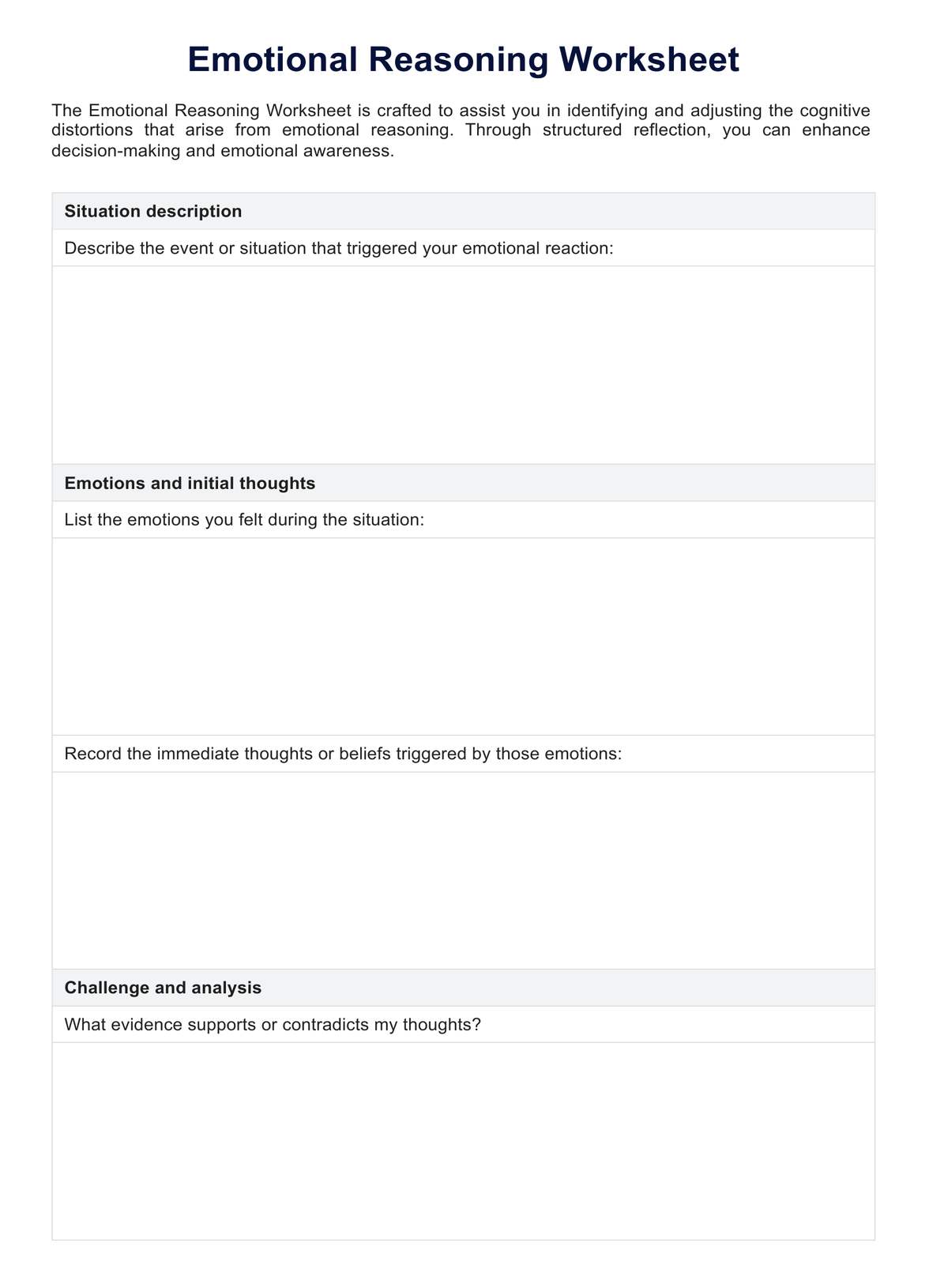No, emotional reasoning is not a disorder itself; it is a cognitive bias that can occur in anyone but is more prevalent in those with emotional disorders.

Emotional Reasoning Worksheet
Explore identifying and adjusting emotional biases with our Emotional Reasoning Worksheet, designed to enhance decision-making and self-awareness further.
Emotional Reasoning Worksheet Template
Commonly asked questions
Yes, through cognitive behavioral therapy (CBT) and practices such as mindfulness, individuals can learn to identify and change patterns of emotional reasoning.
Yes, emotional reasoning plays a significant role in maintaining disorders such as depression and anxiety. It causes individuals to view their negative emotions as accurate reflections of reality, reinforcing their emotional state and perpetuating their psychological disorder.
EHR and practice management software
Get started for free
*No credit card required
Free
$0/usd
Unlimited clients
Telehealth
1GB of storage
Client portal text
Automated billing and online payments











